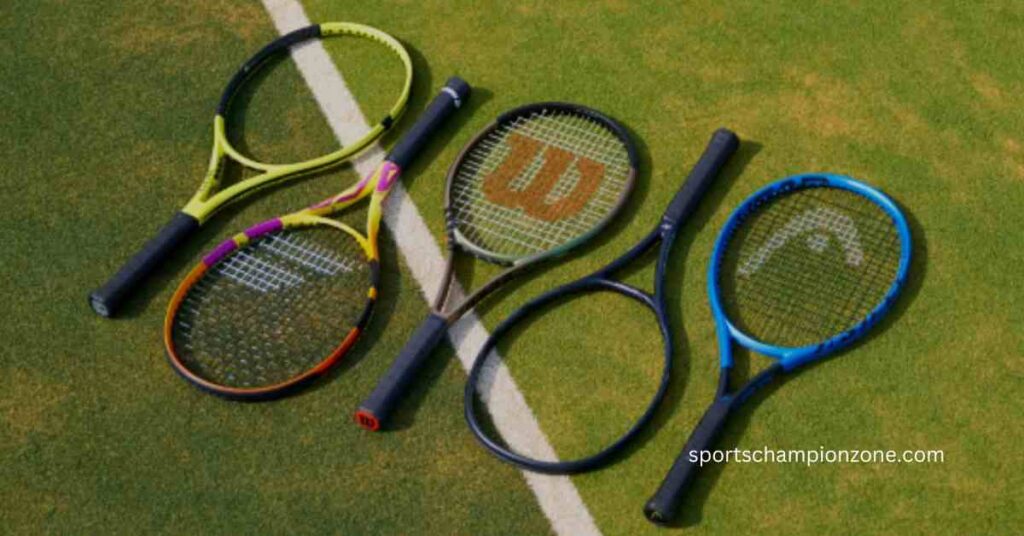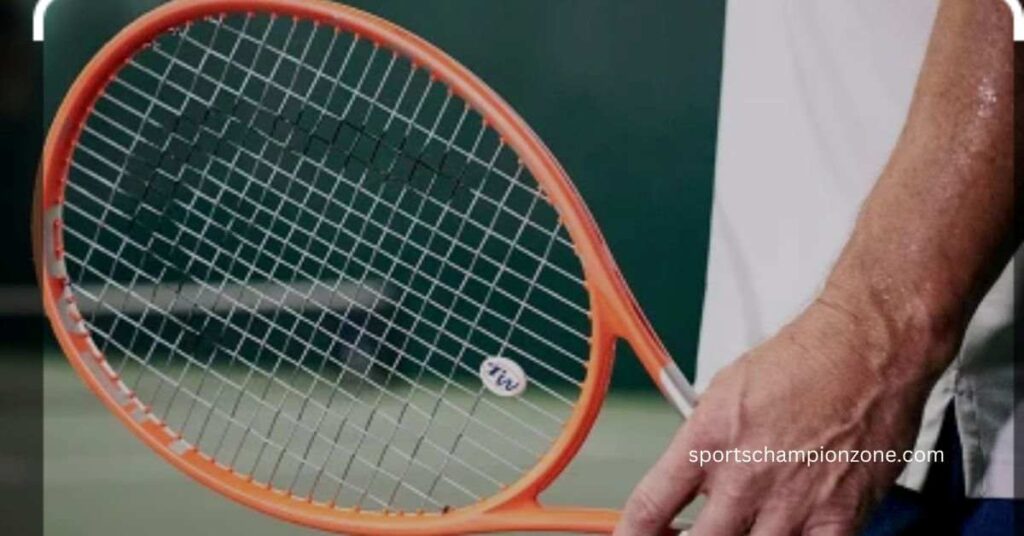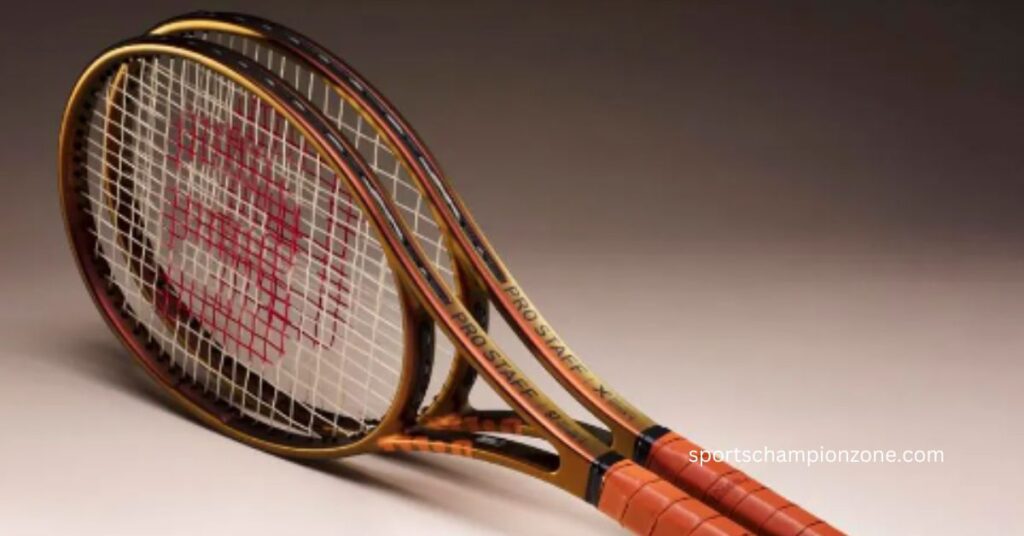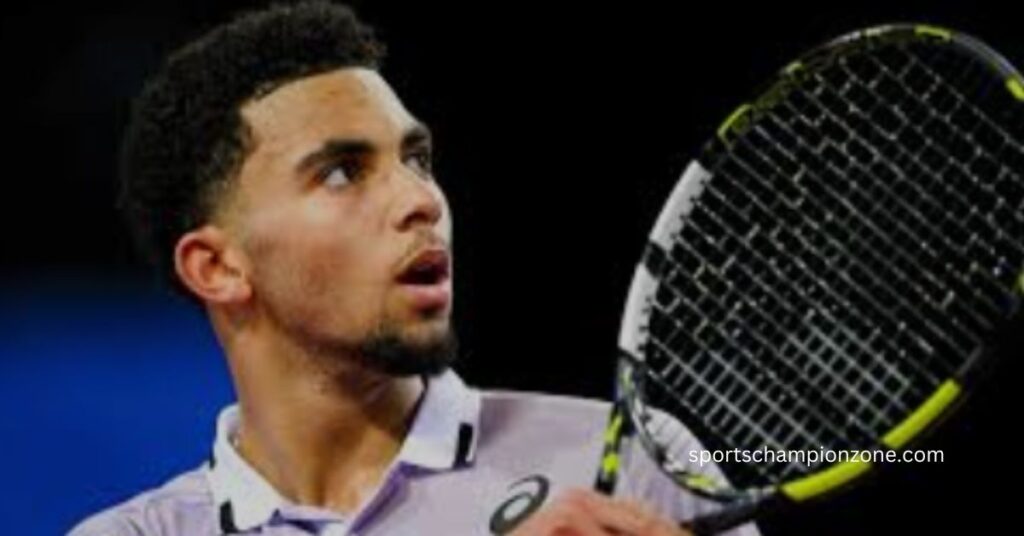The Pro Tennis Rackets is the made for top players who need the best. It’s worked with the latest tech and top-quality stuff, so you get more power, control, and comfort. The best length decline for a pro tennis racket is typically 29 inches, as shown by the Global Tennis Association (ITF). Each swing feels impeccably good, helping you play better and beat your opponents. Everything rotates around giving you the gadgets to win. Join the Masters and feel like a genius on the court.

Life structures of Pro Tennis Rackets:
With respect to understanding pro tennis rackets, it is essential to isolate their life structures. These world class show contraptions are painstakingly made to satisfy the necessities of significant level play. Could we research three key parts: frame improvement, hold and handle, and hanging decisions.
Materials and Design Elements
The edge of a pro tennis rackets fills in as its spine, invigorating, powering, and controlling. Capable rackets are usually evolved using advanced materials like graphite, carbon fiber, and kevlar. These materials offer the best blend of fortitude and versatility, allowing players to make power while staying aware of control over their shots.
Grip and Handle:
The hold and handle of a tennis racket are huge for player comfort and control on the court. The grip is where the player holds the racket, offering trustworthiness and impact during opportunities. Capable players, as often as possible, change their grip size and shape to ensure an optimal fit, allowing them to keep a firm hold without relinquishing versatility.

Impact on Power, Spin, and Feel
The strings of a pro tennis rackets expect an imperative part in choosing its show characteristics. Capable players circumspectly consider their hanging decisions to achieve the best, generally speaking, impact, turn, and feel.
String pressure, assessed in pounds or kilograms, clearly impacts a racket’s power and control. Higher tension customarily achieves more control yet less power, while lower strain offers extended power anyway and reduced control. Players could change their string tension considering individual tendencies, playing style, and court conditions.
Weight and Balance Adjustments for Player Preference
The weight and balance of a pro tennis rackets can basically affect a player’s display on the court. Capable players can change these perspectives to suit their particular tendencies and playing styles.
Weight customization incorporates adding or wiping out weight from various bits of the racket, similar to the head, handle, or throat. Adding weight to the highest point of the racket can construct power and dauntlessness, while adding weight to the handle can additionally foster versatility and control. Then again, decreasing load in unambiguous districts can redesign racket speed and versatility.

Frame Design for Maximizing Performance
The casing plan of a pro tennis rackets expects to play a fundamental role in supporting execution on the court. Capable players every now and again search for rackets with state-of-the-art smoothed out features and innovative packaging to obtain a high ground.
Handle Shape and Size for Comfort and Grip
The handle of a pro tennis rackets is where the player works most directly with the racket, making its shape and size pressing for comfort and hold. Capable players, as often as possible, change their racket handles to ensure an optimal fit and extend execution on the court.
Handle shape customization grants players to pick between round, rectangular, or octagonal handles, each offering an exceptional energy and hold style. A couple of players could lean toward a more ergonomic shape that changes with the state of their hand, while others could pick a standard shape for most prominent control and sufficiency.

Key Features and Technologies:
Pro tennis rackets are furnished with state-of-the-art components and progressions planned to update execution and further develop player experience. We ought to examine three key features a control-organized plan, agreeable advancement, and vibration hosing structures.
Control-Oriented Design:
Control is key in tennis, allowing players to put their shots in with exactness and accuracy. Capable rackets habitually incorporate a control-arranged plan depicted by thick string plans and a solid energy.
Thick string plans contain immovably partitioned strings, achieving a more unassuming opening between each string. This plan makes a greater number of contact centers with the ball, further developing control and lessening the likelihood of haphazard hits. Players can coordinate the bearing and heading of their shots even more, achieving extended consistency and precision on the court.
Spin-Friendly Technology:
Turn is a fundamental part of present day tennis, enabling players to control the heading and skip of the ball for their likely advantage. Capable rackets combine turn pleasing development with extended turn age and control.
Open string plans are an indication of contort cheerful rackets, including greater spaces between the strings. This plan allows the strings to snack into the ball even more, making additional turns and bends upon impact. Players can offer more conspicuous top spins or cuts on their chances, making the ball plunge or twist whimsically, making it pursuing for foes to expect and return.
Vibration Damping Systems:
The vibrations made upon ball impact can cause burden and depletion for players over an extended period, particularly during long matches or serious shows. Capable rackets feature vibration hosing systems planned to direct these effects and redesign player comfort on the court.

Popular Pro Tennis Rackets:
Capable tennis players have their tendencies with regard to rackets, and a couple of models have obtained wide distinction among the virtuosos. Could we research five popular choices and what makes them stick out:
Wilson PRO Staff RF97 Autograph:
Embraced by tennis legend Roger Federer, the Wilson Expert Staff RF97 Mark is applauded for its praiseworthy feel and momentous control on the court. Its profound packaging gives it robustness and power, allowing players to execute definite shots with conviction. The RF97 is inclined toward players who regard custom and precision in their game.
Babolat Pure Aero:
Contort The Babolat Pure Air is a #1 among players like Rafael Nadal for its turn obliging arrangement and tricky power. Its smoothed out packaging and open string configuration engage players to deliver huge proportions of turn, making it ideal for strong baseliners who rely upon significant topspin to lead their adversaries. The Pure Air is a weapon of choice for players searching for the most outrageous contort and control.
Head Graphene 360 Speed Pro:
Utilized by World Number One Novak Djokovic, the Head Graphene 360 Speed Expert offers a successful mix of speed, control, and strength on the court. Its smooth arrangement and responsive feel make it an adaptable choice for players who require a racket that can remain mindful of their rapid game. Whether conveying lightning-fast serves or precise groundstrokes, the Speed Star conveys execution and constancy.
Prince Phantom Pro 100P:
Embraced by shrewd players like John Isner, the Sovereign Nebulous Vision Virtuoso 100P gives unmatched control and feel on the court. Its versatile turn of events and commendable arrangement make it a favorite among players who value touch and slyness over rough power. The Phantom Virtuoso 100P offers precise shot-creation limits and a pleasant, responsive feel, making it an incredible choice for players who rely upon slyness and exactness to outfox their opponents.
Evolution and Innovation in Pro Tennis Rackets:
All through the long haul, pro tennis rackets have gone through basic headway and advancement, changing from direct wooden executes to state-of-the-art instruments tweaked to the prerequisites of present day players. We ought to research this advancement through three vital central focuses: a legitimate blueprint, creative types of progress, and future examples.
Historical Overview: From Wooden Rackets to Modern Materials
Wooden Rackets Era: In the beginning of pro tennis rackets were made from wood, routinely trash or maple. These rackets were profound, unyielding, and leaned toward mutilating, yet they laid out the preparation for the game’s stuff advancement.

Transition to Graphite:
During the 1970s, the introduction of graphite and fiberglass materials changed racket advancement. Graphite rackets were lighter, more strong, and offered more unmistakable power and control, diverging from their wooden accomplices. This progress meant a vital crossroad in racket planning and execution.
Advancements in Materials:
In the past several years, producers have attempted various things with different significant level materials, including carbon fiber, kevlar, and titanium. These materials thought about additional refinement of racket setup, giving players more power, control, and feel on the court.
Technological Advancements:
Impact on Performance and Player Preferences Advanced Construction Techniques: Mechanical movements in gathering processes have provoked the improvement of rackets with smoothed out frame math, overhauled security, and diminished weight. This type of progress has additionally evolved racket execution, allowing players to deliver more power, wind, and control on their shots.
String Technology:
Advancements in string development influence racket execution. The introduction of polyester strings, for example, has engaged players to make more vital bend and control, while hybrid string plans offer a flexible by and large impact and feel.
Customization Choices:
Present day pro tennis rackets go with an extent of customization decisions, allowing players to accommodate their rackets to their specific tendencies and playing styles. From portable weight and harmony systems to versatile string plans, these decisions draw in players to change their equipment for the most outrageous execution on the court.
Future Trends: Predictions for Next Generation of Pro Tennis Rackets
Integration of Smart Technology: The blend of keen development into tennis rackets should be a crucial example from here on out. Rackets equipped with sensors and data assessment limits could outfit players with ceaseless contributions on their show, taking into account more taught getting ready and fundamental heading.
Material Advancement: Continued improvement in materials science is most likely going to drive further movements in racket plan. Lightweight yet extreme materials, for instance, graphene and carbon nanotubes, could engage the improvement of altogether more amazing and responsive rackets.
Customization and Personalization: Future pro rackets could offer altogether more essential levels of customization and personalization, allowing players to adjust each piece of their equipment to match their astounding tendencies and playing styles. This customization could loosen up past weight and balance changes as per integrate redid frame shapes, handle plans, and string plans.
Types of Pro Tennis Rackets:
Pro tennis rackets have different playing styles and tendencies, and thusly, there is a broad assortment of racket types available to suit their necessities. Could we examine the essential kinds of expert tennis rackets and their unmistakable traits:
- Control-Oriented Rackets:
Control-arranged rackets center around precision and feel, spreading the word about them well among players who regard precision over power. These rackets routinely incorporate more humble head sizes, thick string plans, and heavier burdens, giving splendid security and control on the court. Control-organized rackets are leaned toward by players who rely upon shrewdness and contact to outfox their opponents, similar to serve-and-volley educated authorities and counterpunchers.
- Power Rackets:
Power rackets are planned to help the speed and force of a player’s shots, making them ideal for intense baseliners and huge hitters. These rackets regularly incorporate greater head sizes, open string models, and lighter burdens, allowing players to make unsteady power and speed on their strokes. Power rackets are leaned toward by players who rely upon their fortitude and rawness to overpower their enemies and direct play from the norm.
- Spin-Friendly Rackets:
Turn genial rackets are intended to redesign turn age and control, enabling players to give the most outrageous upset prepared. These rackets generally feature open string plans, smoothed out frames, and versatile turns of events, allowing players to make colossal topspin or cut on their shots. Turn very well arranged rackets are leaned toward by players who use turn as a weapon to make focuses, upset opponents’ timing, and control the course of the ball.
- All-Around Rackets:
All-around rackets discover a concordance between power, control of some sort or another, and versatility, settling on them as versatile decisions for players of all styles and limits. These rackets much of the time incorporate moderate head sizes, medium string plans, and changed loads, giving a blend of power and precision on the court. All-around rackets are inclined toward players who regard adaptability and flexibility, allowing them to alter their direction of activity considering the solicitations of each match and foe.
What is Novak Djokovic’s tennis racket?
Novak Djokovic uses the HEAD Graphene 360 Speed pro tennis racket. This racket is known for its control and portability, allowing Djokovic to execute definite shots with power and wind. It features Graphene 360 development for redesigned sufficiency and a greater wonderful equilibrium. The racket’s weight and balance suit Djokovic’s playing style, engaging him to administer arranges with his adaptable game.
What racket did Rafael Nadal use?
Rafael Nadal uses the Babolat Pure Air Tennis Racket. This racket is expected to create monstrous bend and power, matching Nadal’s intense playing style. It features aeromodular development for faster racket head speed and FSI curve advancement for updated turn potential. The Pure Air’s arrangement licenses Nadal to deliver his indisputable shots with precision and power, seeking to make it a well-known choice among players searching for power and curve.
What is a pro tennis racket?
A pro tennis racket is a world class show racket expected for capable players. It routinely incorporates advanced materials and advances to overhaul control, power, and curves. Virtuoso rackets are habitually revamped to suit a player’s solitary tendencies and playing style, giving them the best stuff for serious matches.
What is Federer’s racket?
Roger Federer uses the Wilson Master Staff RF97 Mark tennis racket. This racket is changed to give Federer’s points of interest and components a greater head size for extended power and exculpation. Its praiseworthy arrangement and exceptional feel make it a popular choice among players searching for precision and control on the court.
Conclusion
In conclusion, the universe of pro tennis rackets is rich and unique, offering different decisions to take exceptional consideration of the particular tendencies and playing styles of undeniable level players. From control-arranged rackets planned for precision and slyness to drive rackets intended for unsound shot-creation, there is a virtuoso racket open to suit every player’s necessities on the court.
Turn genial rackets enable players to control the course and bounce of the ball easily, while all-around rackets sort out a concordance between power, control of some sort, and versatility. Besides, comfort arranged rackets center around player success and injury contravention, ensuring life expectancy and legitimacy in a player’s livelihood.
If you want to more detail and better information about this you can also visit:
